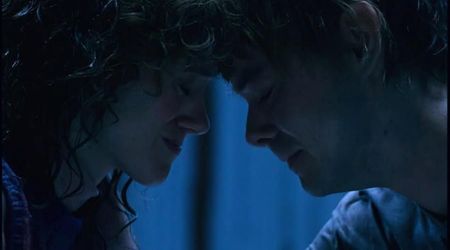'The Business of Drugs' Review: Amaryllis Fox opens a window to illicit drug trade on the Netflix docuseries

Amaryllis Fox is best known as the former CIA agent who worked on the counter-terrorism task force to keep Weapons of Mass Destruction (WMD) from the members of Al Qaeda. Fox's stint with the CIA began when she developed an algorithm as a university student to identify likely terrorist safe havens. The CIA headquarters in Langley, Virginia, heard about "the algo" and recruited Fox, who became one of the youngest female officers at just 22.
When Netflix announced a docuseries, 'The Business of Drugs' to be hosted by Fox, we expected the level of engagement to be at par with Fox's career with the CIA, and we were not disappointed. In six episodes, Fox delves into the economic backgrounds of players of illicit drug trades around the world. Each episode is divided between six illicit substances as Fox examines "the business of drugs".
From cocaine to opium, there are different levels of players. When it comes to cocaine, most people think of Pablo Escobar or the Mexican drug cartels. However, Fox travels to the jungles of Columbia to bring viewers exclusive interviews of those who work on the ground, growing and harvesting the coca plant and turning the harvest into a paste that's sold to be processed into the powdered cocaine. In her chats with these people, whose faces are obscured and voices are modified, we learn that many of them turn to this business for lack of any other means to provide for themselves and their families.
The second episode focuses on synthetics and specifically Alexander Shulgin, a former scientist for Dow Chemicals who helped develop biodegradable pesticides and began to work as a "rogue scientist" experimenting on synthetic drugs. He is best known for resurrecting the long-forgotten recipe for 3,4- methylenedioxy-N-methylamphetamine — better known as MDMA or simply "ecstasy" from the archives of German pharmaceutical firm Merck in the 1960s.
Fox also dives into how research is ongoing for the use of MDMA in psychotherapy to treat PTSD. The third and sixth episodes deal with heroin and opium trades respectively as Fox investigates how the heroin markets work in Kenya and in the United States. In the sixth episode, Fox also dives into the role of the pharmaceutical industry in exacerbating America's opioid addiction due to "unregulated capitalism."
The fourth episode sees Fox traveling to Myanmar and examining how the illicit drug trade works in the geopolitical context of the country. The country's complicated history and politics have made it the Ground Zero in Southeast Asia for meth production and distribution.
The penultimate episode sees Fox back in the United States as she examines the economics of the biggest gateway drug: cannabis. Fox explains that even with the legalization of the drugs in certain states, it is up to the local authorities to respect that, and often the black market flourishes when it comes to cannabis trade. With the immense taxation on cannabis business and lack of tax write-offs, Fox explains that only a small percentage of cannabis sellers are, in fact, licensed by the government to sell.
Through the six episodes, with interviews ranging from players from all levels in the businesses and with economic and behavioral experts, Fox manages to break down some of the most complicating aspects of the illicit drug industry. She explains that while it is easy to divide it into a fight of good versus evil, it is not always so simple. Certainly, 'The Business of Drugs' provides eye-opening insights into one of the biggest businesses in the world.
'The Business of Drugs' is now streaming on Netflix.










